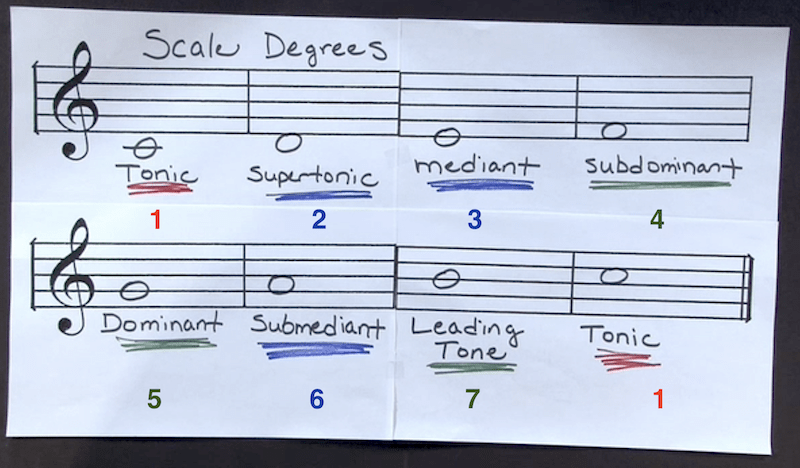Summary
This project is based around melody, it’s about learning how melody works. W’re learning about tonic levels, and how to create tension in music, and resolve the tension.
My First HookTheory Melody

I like how simple but catchy this melody is. I think the notes work very well with each other.
Notes from Howard Goodall’s Melody Video
| Cue | Notes |
| why are melodies so universal? why is distinguishing notes important? | melody conveys emotion music can bridge a language gap every music system in the world is connected to five notes (pentatonic scale) it’s not how many notes you have just what you do with them notes can have the same name and be different pitch different scales give different feelings |
Summary: There are many different melody formations. These formations have been pulled from everywhere around the world, and changed to fit the time and how people are feeling, but the basic notes, and note format stay the same.
Melody Composition Terms and Definitions

- The terms and definitions below are from the Basic Concepts of Music Theory podcast by Jamie Henke at the University of Wisconsin-Madison
- Her Basic Concepts of Music Theory video on YouTube
- Theme: A long, flowing melodic idea.
- Motive: A short, rhythmic idea (Beethoven’s 5th).
- Period: 8-12 measures or a musical sentence.
- Phrase: Usually 4 measures.
- Antecedent (Question) Phrase: First 4 measures of a period.
- Consequent (Answer) Phrase: Second 4 measures of a period.
- Scale Degrees (C Major Scale)
- Tonic: C (1 , 8) – Stability and resolve.
- Supertonic, Mediant, Submediant: D, E, A (2 , 3 , 6) – Moderate tension, useful for transitions and carrying on an idea.
- Subdominant, Dominant, Leading Tone: F, G, B (4 , 5 , 7) – Causes the most tension, leads to the tonic.
- Steps: Any movement using half or whole steps.
- Leaps: Any movement using intervals larger than a whole step.
- Conjunct motion: Melody is built primarily out of steps.
- Disjunct motion: Melody is built primarily out of leaps.
- Repetition: Repeated material (i.e. motive) used to create a link between two phrases of the period.
- Contrast: Two phrases that contain contrasting material to create tension and interest.
- Variation: Halfway between contrast and repetition. The two phrases include some recognizable material and some varied material (i.e. taking ideas up an octave).
One of My Favorite Melodies
I chose this song mainly just because of the calm and happy vibes it gives off to me. It feel curious and almost wondrous, like he’s trying to figure out everyone around him. That and the song is just pleasant to listen to. The key for this song is major G, and the tonic is G. This song uses mainly mid-range cords in it’s song.
My Second HookTheory Melody

I like the general flow of the melody, it feels very positive and kind of adventure-y? The raising tension was throughout the middle of the melody, and the resolving tension was just the ending. The melody ended and began on the same cord (?).
What I Learned & Problems I Solved
I learned what tonic levels were, and about the whole theory of melody so that was very interesting. I didn’t know any of the content that we were working with until we started so I was kind of coming in blind, I had to work around that.
Resources
Hooktheory
Howard Goodall’s Melody Video